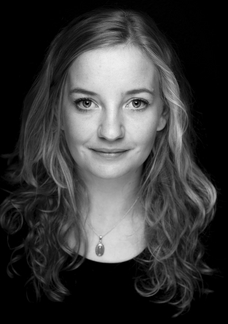Master in Architecture
During the Master in Architecture at the Academy of Architecture, you will learn how to find and promote your own position within the broad field of architecture. The concurrent model, a proven combination of study and work experience, inspired guest lecturers from the field and the small-scale and international study programme in the centre of the city, offers all the tools you need to develop into a fully-fledged architect so that you can blossom into an inspiring spatial artist with your own architectural signature, who is fully equipped to play a central role in the design process. At the Academy of Architecture, you will be trained to be an architect who dares to stick his or her neck out and who is prepared to look further than the world you already know. You see opportunities, can inspire others, dare to make choices and know how to integrate these, so that the whole is more than the sum of the parts.
Interdisciplinary and international
Architecture, urban design and landscape architecture are independent disciplines, but are inextricably linked with each other at the same time. The Amsterdam Academy of Architecture is the only Dutch design study programme that offers these three spatial disciplines in combination. By focusing on the essence and skills of your profession and, at the same time, partly working in interdisciplinary groups, you will be prepared for an integrated professional practice in the current field of work, where there is an increasing demand for your specific design skills within blurring boundaries. Working within an international context is also becoming increasingly important. The Academy also maintains an active network of foreign study programmes, through which students and lecturers are exchanged on a small scale, and is a member of the European Association of Architectural Education (EAAE).
Inspiring environment
The Amsterdam Academy of Architecture is a small-scale study programme in the centre of the city. All the elements of the urban landscape that are studied and taught here can be recognised in the context that surrounds us. In this way, the city becomes your laboratory, as a social structure, historical artwork and enduring design assignment. At the same time, the work of the students is also valuable to the city itself. Through the designs that the Academy places on the agenda and the designs that the students make, we create a parallel reality time and time again, which can hold its own in terms of power of expression.
Course overview Architecture 22-23
OUR MISSION: BUILDING TOWARDS A SUSTAINABLE FUTURE
The world around us is constantly changing and at a rapid pace. We are facing major, cross-border and wide-ranging questions. The challenges – related to climate change, resource scarcity, energy transition, social inequality and declining biodiversity – are urgent, complex, and also all spatial issues for which answers must be sought now in order to maintain perspective on a sustainable and inclusive future.
CURRICULUM
The three study programmes have the same structure. In the six teaching semesters prior to graduation, three forms of education are offered parallel to each other:
- Projects (indicated in this guide with P from the Dutch 'Projecten')
- Research (indicated in this guide with O from the Dutch 'Onderzoek')
- Lectures (indicated in this guide with C from the Dutch 'Colleges')
These three forms of education are supplemented with:
- Form Studies (V) in semesters 1 to 3
- Tools in semester 1 and 2
- the Winter School between semester 1 and 2, 3 and 4, 5 and 6
- the Reflection Clinic and Graduation Clinic in semester 4, 5 and 6
- elements from the elective programme.
Attention is not only devoted to the development of knowledge and skills with these educational components, but students also actively work on their own portfolio.
PROFESSIONAL EXPERIENCE
Acquiring relevant professional experience is part of the study programme at the Academy of Architecture. Practical work experience is gained simultaneously with the study: concurrent education. Generally speaking, this means that an architecture student will work at an architectural firm, an urbanism student will work at an urban design firm or urban planning department, and a landscape architecture student will work at a landscape architecture firm or in a department where relevant landscape design work is carried out.
It is also possible to work for multiple employers on a freelance basis in the discipline the student is studying. Students are allowed to combine their studies at the Academy of Architecture with their own practice or business. The condition, in that case, is that the student submits a written request beforehand detailing the work that he or she will perform, accounting for the amount of time they will spend on this work, explaining which professional qualifications will be developed with this, and identifying the mentor who will supervise this work. In addition, the student will explain why the workplace meets the qualitative demands of the Academy. After approval from the study programme, the student can include this practical and professional experience in the practice records for assessment.
SEMESTER 1
P1a (AUL) Space
P1b (A) Scenography
O1 (AUL) Methods
V1a (AUL) Natural Matter
V1b (AUL) Inspirational Matter
Tools 1+2 (A) Constructional Design
C1 (AUL) Foundations and Reflection
SEMESTER 2
Winter School (AUL)
P2a (AU) Typology
P2b (AL) Nature Culture
O2a (A) Forms of Knowledge
O2b (AUL) Ecosystems and Reflection
V2a (AUL) Self-Growing Matter
V2b (AUL) Technical Matter
C2a (AUL) Book and Debating Club
In the fourth year, the graduation process begins. Our Academy's Architecture learning outcomes are as follows:
DISCIPLINE
- The ability to create architectural designs that satisfy both aesthetic, as well as technical and functional, requirements;
- Appropriate knowledge of the international history and the theory of architecture and related art forms, technological subjects and social sciences;
- Ability to make a design and plan clear to others visually, in writing and orally in an interdisciplinary, international and/or intercultural context;
- Insight into the problems in terms of structural design, the construction and the civil engineering in connection with the design of buildings in the Netherlands and abroad.
CONTEXT
- Appropriate knowledge of the physical and technological issues that are related to the function of a building with a view to providing comfort and protection against weather conditions;
- Appropriate knowledge of the industries, organisations, regulations and procedures relevant to a project;
- Appropriate knowledge of urbanism, garden and landscape architecture and physical planning, and the techniques used for that purpose in so far as these may influence the quality of the architectural design;
- Appropriate knowledge of the visual arts, insofar as these can influence the quality of the architectural design;
- Insight and skill in terms of the methods of research and preparation when making architectural project.
PROFESSION
- Insight into the architectural profession and the role of the architect in society in the Netherlands and abroad, particularly when making projects in which social factors have to be taken into account;
- Insight into the relationship between people and architectural structures, and between architectural structures and their environment, as well as the need to tailor architectural structures and the spaces in-between to human needs and standards in the Netherlands and abroad;
- Technical competence as a designer, in order to be able to satisfy the requirements of the users of a building within the limits imposed by budgetary factors and building regulations;
- Appropriate knowledge of and insight into procedures and processes of decision-making.
Career prospects
The Amsterdam Academy of Architecture stimulates its students to get the maximum out of their talents. This results in an exceptionally high level, and the work of students from the Academy is regularly awarded the Archiprix or other prizes.
Architect
After the Master’s programme in Architecture, you will have access to a broad and well-grounded range of design and research tools and be able to operate as an architect nationally and internationally. Moreover, you will be able to effectively collaborate with other disciplines in the design, planning and implementation process as an independent designer within a bureau, or you can begin your own bureau.
Shifts in the essence of the profession
While the architect was previously a master builder who influenced the entire building process, their role is currently more of a designing party within larger processes. An architect must be able to anticipate changes in the use and functioning of buildings. However, the architect’s duty remains to provide a meaningful architectural answer to all preconditions, requirements and ambitions. In this way, the architect adopts a central position within the design process.
Title
The Architecture degree from the Academy of Architecture gives graduates the right to independent professional practice as an Architect and meets the admission requirements of the various registers formulated in the Dutch Academic Titles (Architects) Act. As a graduate, you have direct access to the Dutch Register of Architects.
Image in header: The Plant by Jasmijn Rothuizen.
![[Translate to English:] [Translate to English:]](/media/avb/_processed_/3/d/csm_Jasmijn-Rothuizen-Theplant4b_244f6e2f5c.jpeg)





